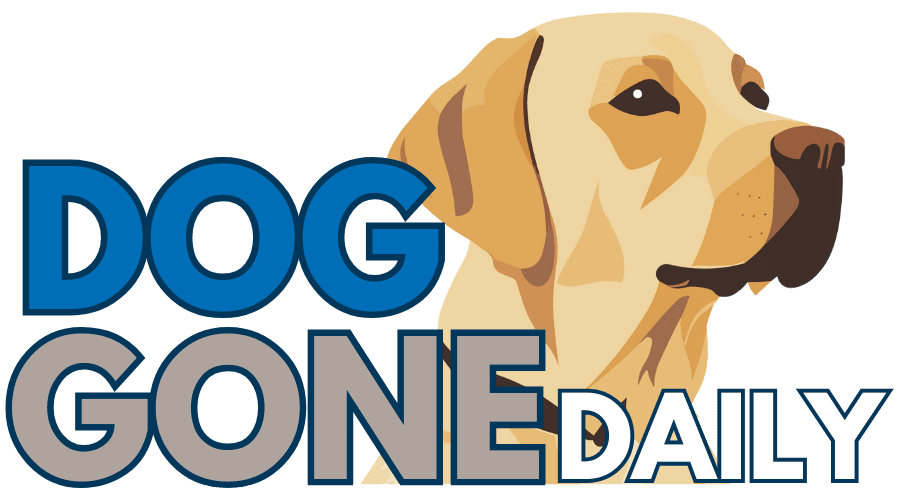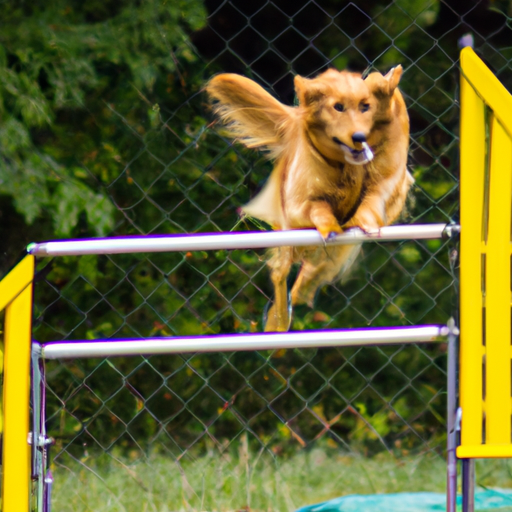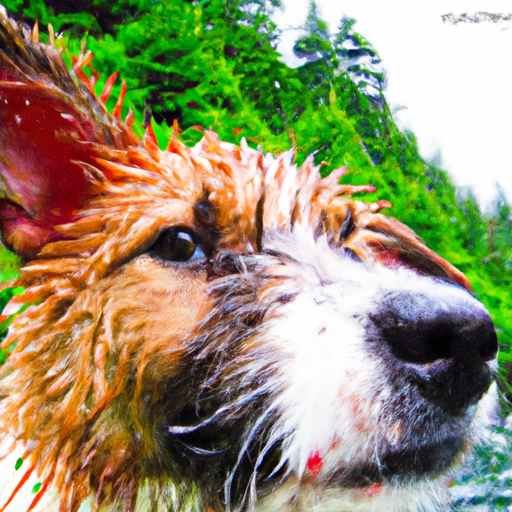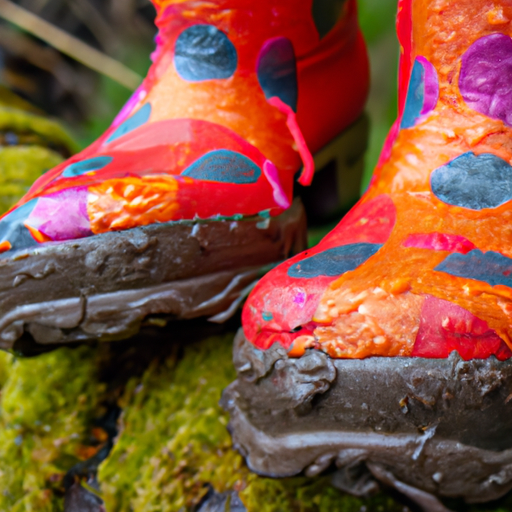Are you looking for a fun activity to enjoy with your furry friend? Look no further than dog agility at the park! This exciting and engaging sport provides a fantastic way to bond with your dog while also providing mental and physical stimulation. Whether your dog is a seasoned pro or just starting out, agility courses at the park offer a range of obstacles and challenges to conquer. From jumps and tunnels to weave poles and A-frames, there's something for every dog to enjoy. So grab your pup's leash and head to the park for a day filled with laughter, exercise, and unforgettable memories.
Choosing the Right Park
When it comes to practicing dog agility, choosing the right park is key. Not all parks are created equal, and some may be more suitable for this activity than others. Consider a few factors when selecting a park for your dog agility training sessions.
Consider the park layout
First and foremost, take a look at the park's layout. Is there enough space for you and your dog to navigate through obstacles? A park with a larger area will provide more opportunities for setting up a course and practicing various agility exercises. Additionally, look for parks with both grassy areas and hard surfaces, as this will allow your dog to familiarize themselves with different terrains commonly encountered in agility competitions.
Check for dog-friendly features
Another important aspect to consider is whether the park has any dog-friendly features. Look for parks with designated off-leash areas where your dog can freely roam and practice their agility skills without restrictions. In addition, some parks may have specific agility equipment or structures readily available for use, such as tunnels, jumps, or weave poles. These features can provide extra diversity and challenge for your training sessions.
Look for open spaces
Open spaces are crucial for dog agility training, as they allow your canine companion to properly stretch their legs and maneuver through obstacles. Look for parks that have plenty of open areas where you can set up your own agility course without disrupting other park visitors. The more open space available, the more room there is for your dog to run, jump, and improve their agility skills.
Consider nearby amenities
Lastly, consider the nearby amenities when choosing a park. It's always convenient to have facilities such as water fountains, restrooms, and shaded areas nearby. These amenities will make your training sessions more comfortable and enjoyable, ensuring that both you and your dog have a pleasant experience at the park.
By taking these factors into account, you can find the perfect park for your dog agility training sessions, setting the stage for successful and fun-filled practice sessions.
Dog Agility Equipment
Dog agility equipment is not only essential for training your dog to navigate through various obstacles but also adds excitement and entertainment to your training sessions. Understanding the different types of equipment available, the safety precautions to be taken, and some training tips can help you make the most of your agility training.
Types of equipment
There are several types of dog agility equipment that you can incorporate into your training sessions. Some common equipment includes jumps, tunnels, weave poles, A-frames, see-saws, and dog walks. Each piece of equipment targets different agility skills, such as jumping, weaving, and balancing. By having a variety of equipment, you can create a dynamic and challenging course for your dog to navigate.
Safety precautions
When using dog agility equipment, it's essential to prioritize safety. Ensure that the equipment is sturdy, stable, and safe for your dog to use. Regularly inspect all equipment for any signs of wear and tear, and replace or repair damaged parts as soon as possible. Additionally, make sure the equipment is set up on a level surface to prevent any risk of injury. Always supervise your dog during training sessions to ensure they are using the equipment correctly and avoid any accidents.
Training tips
Training your dog to use agility equipment requires patience and consistency. Start with introducing your dog to one piece of equipment at a time, gradually building their confidence and understanding. Use positive reinforcement, such as treats and verbal praise, to reward your dog for successfully navigating each obstacle. Break down the training process into small steps and repeat each step multiple times until your dog is comfortable and confident. Consistency is key, so make sure to practice regularly and gradually increase the difficulty level as your dog progresses.
By understanding the types of equipment available, taking safety precautions, and implementing effective training techniques, you can create a safe and engaging environment for your dog's agility training.
Training Your Dog
Training your dog is an essential part of successful dog agility. Before tackling advanced agility commands and obstacle courses, it's essential to establish a foundation of basic obedience training and introduce your dog to agility-specific commands.
Basic obedience training
Basic obedience training lays the foundation for your dog's agility journey. Teach your dog essential commands such as sit, stay, down, and come. These commands will not only help you control your dog during agility training but also ensure their safety and the safety of others.
Introducing agility commands
Once your dog has mastered basic obedience commands, it's time to introduce agility-specific commands. Commands like “tunnel,” “jump,” “weave,” and “table” will help guide your dog through different agility obstacles. Use consistent gestures or verbal cues to communicate these commands to your dog, and reinforce desired behaviors with rewards. Gradually increase the difficulty level by introducing combinations of agility commands and challenging obstacles.
Training for specific obstacles
Each agility obstacle requires specific training techniques. For jumps, teach your dog to clear the bar without touching it. Start with low jumps and gradually increase the height as your dog becomes more confident and skilled. When training weave poles, focus on teaching your dog to weave in and out of the poles in a controlled manner. Break down the obstacle into smaller steps and reward your dog for successfully completing each one. With consistent practice and positive reinforcement, your dog will be able to conquer any agility obstacle.
Training your dog for agility requires patience, consistency, and positive reinforcement. By establishing a strong foundation of basic obedience training, introducing agility commands, and targeting specific obstacles, you can help your dog become a skilled agility competitor.
Safety Precautions
Safety should always be a top priority when engaging in agility training with your dog. By taking a few precautions, you can minimize the risk of injuries and create a safe environment for both you and your furry friend.
Dog's health and fitness
Before engaging in any intense physical activity, it's essential to ensure that your dog is in good health and physical condition. Consult with your veterinarian to determine if your dog is fit for agility training. Regular health check-ups, vaccinations, and preventive care are necessary to keep your dog healthy and reduce the risk of injuries.
Proper warm-up and cool-down
Just like humans, dogs need warm-up and cool-down exercises before and after agility training sessions. Start with a brisk walk or light jog to warm up your dog's muscles and gradually increase the intensity of the warm-up exercises. After training, engage in a few cool-down exercises, such as walking or stretching, to help your dog recover and prevent muscle soreness.
Avoiding injuries
Agility training involves physical exertion and jumping, which can sometimes lead to injuries. Make sure that the equipment you use is appropriate for your dog's size and breed to minimize the risk of accidents. Allow your dog to progress at their own pace, gradually increasing the difficulty level of the obstacles. Avoid repetitive or excessive jumping to prevent strain on your dog's joints. If you notice any signs of discomfort or pain during training, consult with your veterinarian.
Supervision and control
Always supervise your dog during agility training sessions to ensure their safety. Stay within close proximity to your dog and provide them with clear instructions and guidance. Maintain control over the training environment, and prevent any distractions or potential hazards. By being present and actively involved, you can quickly address any safety concerns and ensure a safe training experience for both you and your dog.
By prioritizing safety, paying attention to your dog's health and fitness, incorporating warm-up and cool-down exercises, and closely supervising training sessions, you can create a safe and secure environment for your dog agility training.
Setting Up a Course
Setting up a course for your dog agility training sessions requires careful consideration and planning. By following a few guidelines, you can create a challenging and engaging course that will enhance your dog's agility skills.
Choosing the obstacles
When choosing the obstacles for your course, consider your dog's skill level and capabilities. Start with basic obstacles and gradually introduce more challenging ones as your dog progresses. Make sure to include a mix of jumps, tunnels, weave poles, and other agility equipment to work on different skills. Adjust the height and difficulty level of the obstacles based on your dog's comfort and confidence.
Placement and spacing
The placement and spacing of the obstacles play a crucial role in creating a smooth and flowing course. Strategically position the obstacles in a way that allows for smooth transitions between them. Avoid placing obstacles too close together, as this may make it difficult for your dog to navigate through. Create ample space between obstacles to ensure safe and efficient movement.
Adding variations
To keep your dog engaged and challenged, incorporate variations within the course. Use different angles, heights, and configurations of the obstacles to test your dog's agility and problem-solving skills. Make sure to train your dog on various surfaces, such as grass, dirt, or artificial turf, for versatility and adaptability.
Creating a flow
The flow of the course is essential for a successful agility run. Ensure that the obstacles are arranged in a logical sequence, allowing for a smooth and continuous movement. Consider the direction changes, entry points, and exit points for each obstacle to maintain a natural flow. Practice running the course yourself to identify any areas that may need adjustment or improvement.
By carefully selecting the obstacles, strategically placing them, incorporating variations, and creating a flowing course, you can provide your dog with a challenging and rewarding training experience.
Practicing with Your Dog
Regular practice is key to improving your dog's agility skills and maintaining their performance level. By following a structured training plan and gradually increasing the difficulty level, you can help your dog progress from simple exercises to full courses.
Starting with simple exercises
Begin your practice sessions with simple exercises that target specific skills or obstacles. Focus on perfecting individual elements of agility, such as jumps or weave poles, before progressing to more complex combinations. Break down each exercise into smaller steps and reward your dog for successful completion. As your dog becomes more confident and proficient, gradually increase the difficulty level by adding more obstacles or introducing timed challenges.
Progressing to full courses
Once your dog has mastered individual elements, start incorporating multiple obstacles to create full courses. Begin with shorter courses and gradually increase the number of obstacles and complexity. Practice running the courses multiple times, focusing on maintaining a steady pace and smooth transitions. As your dog becomes more experienced, introduce variations within the courses to keep them engaged and continuously challenge their skills.
Timing and scoring
In agility competitions, timing and scoring play a significant role. To prepare your dog for competition, practice timing their runs and tracking their performance. Use a stopwatch or timer to measure their speed and efficiency. This will help you identify areas where your dog may need improvement or where you can make adjustments to optimize their performance.
Building up endurance
Agility training requires both physical and mental stamina. Gradually build up your dog's endurance by increasing the duration and intensity of the training sessions. Incorporate interval training, short bursts of intense activity followed by periods of rest, to simulate the energy demands of a competitive agility run. Regular exercise, proper nutrition, and ample rest will help your dog maintain peak performance levels.
By starting with simple exercises, progressing to full courses, focusing on timing and scoring, and building up your dog's endurance, you can ensure that their agility training is effective and enjoyable.
Joining a Dog Agility Club
Joining a dog agility club can have numerous benefits for both you and your furry companion. These clubs provide a supportive and social environment where you can learn from experienced trainers, participate in competitions, and socialize with other dog owners who share your passion for agility.
Benefits of joining a club
Joining a dog agility club offers a range of benefits. You'll have access to expert guidance and training resources, helping enhance your skills as a handler and improving your dog's agility abilities. The club environment provides opportunities for socialization, allowing your dog to interact with other dogs and people in a controlled and structured setting. Additionally, clubs often organize training sessions, workshops, and competitions, offering valuable learning experiences and a chance to showcase your dog's talent.
Finding a local club
To find a local dog agility club, do some research online or ask fellow dog owners for recommendations. Visit the clubs in your area and observe their training sessions to get a sense of their training methods and atmosphere. Look for clubs that prioritize positive reinforcement and have experienced trainers who are knowledgeable in agility training. Choose a club that aligns with your goals, whether it's recreational agility or competitive agility.
Participating in competitions
Dog agility competitions provide an exciting and challenging experience for both you and your dog. Joining a club will present opportunities to participate in local, regional, and even national competitions. Competing not only allows you to showcase your dog's skills but also provides an opportunity to evaluate your own handling abilities. Competitions foster teamwork, sportsmanship, and personal growth, creating memorable experiences for both you and your dog.
Socializing with other dog owners
Dog agility clubs are fantastic places to meet like-minded individuals who share your love for agility and dogs. Bond with fellow dog owners, exchange training tips and advice, and forge lasting friendships. Socialization outside of training sessions can also lead to fun outings, playdates, and training sessions with other club members.
By joining a dog agility club, you can access professional guidance, train in a supportive environment, participate in competitions, and connect with other dog owners who share your passion for agility.
Tips for a Successful Training Session
To make the most of your dog agility training sessions, keep these tips in mind:
Bring treats and toys
Rewards are essential for reinforcing desired behaviors during training. Have a variety of treats and toys handy to reward your dog for successfully completing obstacles or following commands. Choose treats that are high in value and motivating for your dog. Rotate between different toys to keep your dog engaged and excited.
Use positive reinforcement
Positive reinforcement is a powerful training technique that encourages your dog to repeat desired behaviors. Instead of punishing mistakes or undesired behavior, focus on rewarding and praising your dog for their successes. Verbal praise, treats, and playtime are all effective forms of positive reinforcement. By using positive reinforcement, you can create a positive and enjoyable training experience for your dog.
Keep sessions short and frequent
Dogs have shorter attention spans, so it's important to keep training sessions short and focused. Aim for frequent, short sessions rather than long, exhaustive ones. This will help maintain your dog's motivation and prevent them from becoming bored or fatigued. Five to ten minutes of focused training per session is often sufficient.
End on a positive note
Always try to end each training session on a positive note. Finish with a command your dog already knows and is likely to succeed at, followed by a reward and lots of praise. This will leave your dog feeling successful and motivated for the next session, helping to build their confidence and reinforce a positive association with training.
By following these tips, you can create a positive, rewarding, and successful training session for both you and your dog.
Common Challenges and Solutions
While dog agility training can be a fun and rewarding activity, it's not without its challenges. Here are some common challenges you may encounter during training and some solutions to overcome them.
Fear or hesitation
Some dogs may exhibit fear or hesitation when faced with new or unfamiliar obstacles. To address this challenge, start by introducing the obstacle gradually and at a distance. Use positive reinforcement, such as treats or praise, to encourage your dog to approach and interact with the obstacle. Gradually decrease the distance over time until your dog is comfortable and confident.
Overexcitement or distraction
Overexcitement and distraction can make it challenging for your dog to focus during training sessions. To manage this, practice impulse control exercises outside of agility training. Teach your dog to wait or settle on command, and gradually increase the distractions in the environment. Use calm and consistent energy yourself, as dogs often mirror their handler's behavior. Building a strong foundation of obedience training will also help your dog stay focused and attentive.
Trouble with specific obstacles
Certain obstacles may pose more of a challenge for your dog than others. If your dog struggles with a particular obstacle, break it down into smaller steps and provide additional encouragement and rewards. Offer assistance, such as guiding your dog through the obstacle with a treat or toy. Gradually reduce your involvement as your dog gains confidence and proficiency.
Lack of motivation
If your dog seems uninterested or lacks motivation during training, it may be helpful to reevaluate your training methods or adjust the level of difficulty. Introduce new and engaging training techniques, such as clicker training or incorporating games into the training session. Varying the rewards and incorporating new challenges can also reignite your dog's motivation.
By recognizing and addressing these common challenges, you can overcome obstacles and continue to progress in your dog agility training.
Fun Games to Play
Incorporating fun games into your dog agility training sessions can keep your dog engaged, motivated, and excited about training. Here are some fun games you can play with your agility-loving pup:
Obstacle course relay race
Set up an obstacle course with various agility equipment. Divide the course into sections and compete against your dog in a relay race. Take turns running through the course, using timing to determine the winner. This game adds an element of competition and excitement to your training sessions.
Tug of war with agility toys
Engage your dog in a game of tug of war using agility toys such as rope tugs or rubber balls. This game helps build your dog's strength, endurance, and focus. Use the game as a reward for successfully completing agility exercises or as a break between training sessions.
Hide and seek with treats
Hide treats around the training area and encourage your dog to find them. This game not only stimulates your dog's sense of smell but also enhances their problem-solving skills. Start with easy hiding spots and gradually increase the difficulty level.
Agility-inspired fetch
Incorporate agility elements into a game of fetch by throwing the ball through an obstacle, such as a hoop or tunnel. This game combines physical exercise with agility training and adds an extra challenge to a classic game.
By incorporating these fun games into your dog agility training, you can make training sessions enjoyable and strengthen the bond between you and your furry friend.
Dog agility is a dynamic and exciting sport that allows dogs and their owners to bond while having fun. By choosing the right park, utilizing appropriate equipment, implementing effective training techniques, prioritizing safety, and incorporating fun games, you can unlock your dog's agility potential and create an enjoyable training experience for both of you. So grab your gear, head to the park, and let the agility adventure begin!






